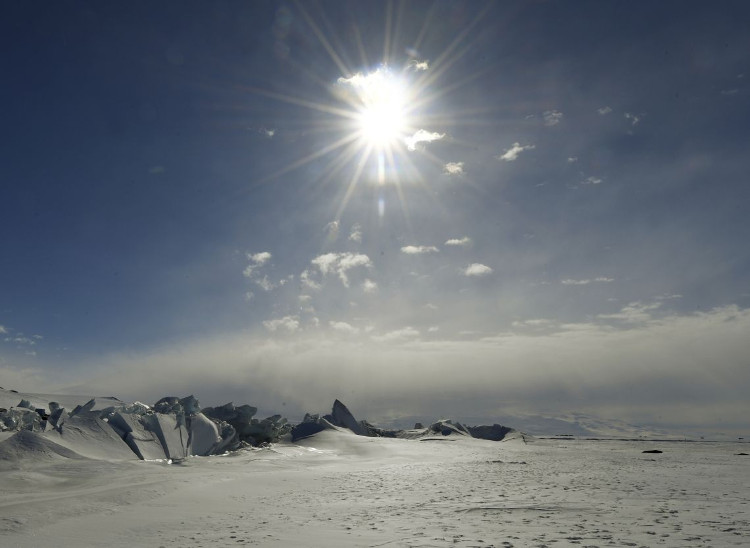The ozone gap in Antarctica is the smallest in nearly 3 decades
The ozone gap formed in Antarctica in September this year is the smallest sized hole monitored by scientists since 1988.
This is the research result of the US Aerospace Agency (NASA) and the US National Oceanic and Atmospheric Administration (NOAA).
NASA scientists and NOAA report that the 2017 ozone formation is the smallest in size due to its nature , not a sign of rapid recovery.
Information from NASA satellites showed that on September 11, ozone hole size could reach 2.5 times the area of the United States, equivalent to 19.7 million square kilometers, then narrowed down until October.

Large ice sheets on the Ross Sea in Antarctica on November 12.(Source: AP / VNA).
The NOAA measurements showed that the Antarctic ozone layer was eroded to the lowest level compared to the peak period of ozone destruction in 1988. Chief Scientist of NASA Earthquake Science Paul Newman identify ozone holes in Antarctica unusually weak this year.
According to him, this development is exactly as scientists forecast based on weather conditions in the Antarctic stratosphere.
Scientists appreciate the warm and unstable cyclone in Antarctica , a low-stratospheric low-pressure system moving clockwise in the atmosphere of this continent, helping to narrow the cloud the stratosphere formed at the lower layer, thereby preventing the occurrence of a chemical reaction that can destroy ozone.
Since 1991, the average area of the ozone hole monitored is about 25.9 million square kilometers.
According to NASA and NOAA, the ozone hole area is still relatively large because ozone concentrations such as chlorine and bromine are still high enough to corrode ozone significantly.
Scientists predict that by the year 2070, the ozone gap in Antarctica could recover as a level in 1980 thanks to the Montreal Protocol concerning the monitoring of compounds that destroy the ozone layer signed in 1987. .
The ozone layer in the stratosphere is about 11-40km from the Earth's surface. This layer acts as a protective film for the Earth from ultraviolet radiation that can cause skin cancer and cataracts, affecting immune systems as well as damage to plants.
- New discovery of the ozone layer gap in Antarctica
- Why is the ozone hole concentrated in Antarctica?
- Still need to be alert for ozone layer hole
- Ozone hole ... is shrinking
- The ozone layer has started to recover?
- Find out why the temperature in South Africa increases
- The person who discovered the ozone layer hole died
- Ozone holes in Antarctica show signs of shrinking
- Ozone holes in Antarctica: can not be predicted
- The ozone layer gap in Antarctica begins to shrink
- Ozone layer recovered: Happy or worried?
- Ozone holes can disappear by 2050
 Is the magnetic North Pole shift dangerous to humanity?
Is the magnetic North Pole shift dangerous to humanity? Washington legalizes the recycling of human bodies into fertilizer
Washington legalizes the recycling of human bodies into fertilizer Lightning stone - the mysterious guest
Lightning stone - the mysterious guest Stunned by the mysterious sunset, strange appearance
Stunned by the mysterious sunset, strange appearance